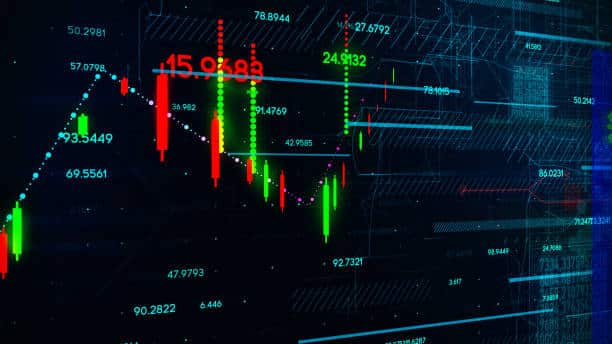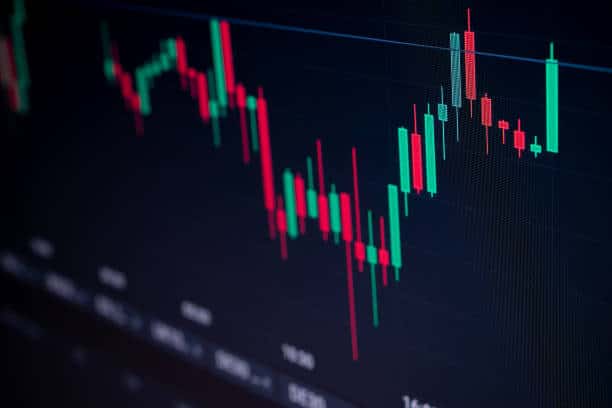Forex indicators are essential tools for traders in the volatile realm of foreign currency trading, or forex, since they help them navigate the ups and downs of the market. Data points called forex indicators show the potential movement of a currency.
3
Payment methods
Trading platforms
Regulated by
Support
Min.Deposit
Leverage max
Currency Pairs
Classification
Mobile App
Min.Deposit
$100
Spread min.
Variables pips
Leverage max
100
Currency Pairs
40
Trading platforms
Funding Methods





Regulated by
FCA
What you can trade
Forex
Indices
Actions
Cryptocurrencies
Raw Materials
Average spread
EUR/GBP
-
EUR/USD
-
EUR/JPY
0.3
EUR/CHF
0.2
GBP/USD
0.0
GBP/JPY
0.1
GBP/CHF
0.3
USD/JPY
-
USD/CHF
0.2
CHF/JPY
0.3
Additional Fee
Continuous rate
Variables
Conversión
Variables pips
Regulation
Yes
FCA
No
CYSEC
No
ASIC
No
CFTC
No
NFA
No
BAFIN
No
CMA
No
SCB
No
DFSA
No
CBFSAI
No
BVIFSC
No
FSCA
No
FSA
No
FFAJ
No
ADGM
No
FRSA
71% of retail investor accounts lose money when trading CFDs with this provider.
Min.Deposit
$100
Spread min.
- pips
Leverage max
400
Currency Pairs
50
Trading platforms
Funding Methods




Regulated by
CYSECASICCBFSAIBVIFSCFSCAFSAFFAJADGMFRSA
What you can trade
Forex
Indices
Actions
Cryptocurrencies
Raw Materials
Etfs
Average spread
EUR/GBP
1
EUR/USD
0.9
EUR/JPY
1
EUR/CHF
1
GBP/USD
1
GBP/JPY
1
GBP/CHF
1
USD/JPY
-
USD/CHF
1
CHF/JPY
1
Additional Fee
Continuous rate
-
Conversión
- pips
Regulation
No
FCA
Yes
CYSEC
Yes
ASIC
No
CFTC
No
NFA
No
BAFIN
No
CMA
No
SCB
No
DFSA
Yes
CBFSAI
Yes
BVIFSC
Yes
FSCA
Yes
FSA
Yes
FFAJ
Yes
ADGM
Yes
FRSA
71% of retail investor accounts lose money when trading CFDs with this provider.
Min.Deposit
$50
Spread min.
- pips
Leverage max
500
Currency Pairs
40
Trading platforms
Funding Methods




What you can trade
Forex
Indices
Actions
Raw Materials
Average spread
EUR/GBP
-
EUR/USD
-
EUR/JPY
-
EUR/CHF
-
GBP/USD
-
GBP/JPY
-
GBP/CHF
-
USD/JPY
-
USD/CHF
-
CHF/JPY
-
Additional Fee
Continuous rate
-
Conversión
- pips
Regulation
No
FCA
No
CYSEC
No
ASIC
No
CFTC
No
NFA
No
BAFIN
No
CMA
No
SCB
No
DFSA
No
CBFSAI
No
BVIFSC
No
FSCA
No
FSA
No
FFAJ
No
ADGM
No
FRSA
71% of retail investor accounts lose money when trading CFDs with this provider.
They are a crucial component of the extensive arsenal that traders employ to forecast future price fluctuations and guide their trading choices. The purpose of this essay is to demystify forex indicators by highlighting their importance and usefulness in the world of currency trading.
Our Forex Signals
1 - month
Subscription
 Up to 15 signals daily
Up to 15 signals daily 76% success rate
76% success rate Entry, take profit & stop loss
Entry, take profit & stop loss Amount to risk per trade
Amount to risk per trade Risk reward ratio
Risk reward ratiomonth
3 - month
Subscription
 Up to 15 signals daily
Up to 15 signals daily 76% success rate
76% success rate Entry, take profit & stop loss
Entry, take profit & stop loss Amount to risk per trade
Amount to risk per trade Risk reward ratio
Risk reward ratiomonth
 Most popular
Most popular
6 - month
Subscription
 Up to 15 signals daily
Up to 15 signals daily 76% success rate
76% success rate Entry, take profit & stop loss
Entry, take profit & stop loss Amount to risk per trade
Amount to risk per trade Risk reward ratio
Risk reward ratiomonth
Lifetime
Subscription
 Up to 15 signals daily
Up to 15 signals daily 76% success rate
76% success rate Entry, take profit & stop loss
Entry, take profit & stop loss Amount to risk per trade
Amount to risk per trade Risk reward ratio
Risk reward ratioSeparate Swing Trading Group
 Up to 3 signals weekly
Up to 3 signals weekly 76% success rate
76% success rate Entry, take profit & stop loss
Entry, take profit & stop loss Amount to risk per trade
Amount to risk per trade Risk reward ratio
Risk reward ratiomonth
1 - month
Subscription
 Up to 15 signals daily
Up to 15 signals daily 76% success rate
76% success rate Entry, take profit & stop loss
Entry, take profit & stop loss Amount to risk per trade
Amount to risk per trade Risk reward ratio
Risk reward ratiotime
Eightcap - Regulated Platform With Tight Spreads

- Minimum deposit of just 250 USD to get lifetime access to all the VIP channels
- Use our Secure and Encrypted Infrastructure
- Spreads from 0.0 pips on Raw Accounts
- Trade on the Award-Winning MT4 & MT5 Platforms
- Multi-jurisdictional Regulation
- No Commission Trading on Standard Accounts

Understanding Forex Indicators
Currency traders employ statistical methods called forex indicators to determine the direction of a currency pair’s price movement. They are mathematical computations that are illustrated visually on trading charts and are derived from historical and real-time price data for a particular currency pair.

Different Types of Forex Indicators
Leading and trailing indicators are two categories into which forex indicators may be generally divided.
- Leading indicators. These are employed to foresee prospective price changes before they take place. They produce signals in advance of price changes, giving traders the chance to profit from the anticipated changes. But because they are predictive, leading indicators can also send out erroneous signals. The Relative Strength Index (RSI) and Stochastics are two instances of leading indicators.
- Lagging indicators. On the other hand, lagging indicators provide confirmation of price changes after they have already occurred. Due to the fact that they are based on historical data, they tend to be more accurate, but because of their delayed signals, it is possible that the best time to trade has already passed. Lagging indicators include moving averages and the Moving Average Convergence Divergence (MACD).
Key Forex Indicators
Let’s examine some of the most popular forex indicators in more detail.
- Moving Averages (MA). First, moving averages (MA) One of the easiest and most popular forex indicators is this one. To assist traders in spotting trends, it computes the average price over a predetermined number of periods. Simple, exponential, or weighted MAs are all possible.
- The RSI (Relative Strength Index). This momentum oscillator gauges the rate and variety of price changes. It is used to spot overbought or oversold market circumstances.
- MACD (Moving Average Convergence Divergence). This trend-following momentum indicator displays the correlation between the price of a security’s two moving averages. To find probable purchase and sell signals, it is used.
- A Fibonacci retracement. This indicator is designed to determine potential support and resistance levels and is based on the fundamental numbers determined by mathematician Leonardo Fibonacci in the 13th century.
- Bollinger Bands. These zones of volatility are positioned over and under a moving average. Depending on market volatility, the bands enlarge and contract.
- The stochastic oscillator. This momentum indicator evaluates a security’s closing price in relation to a range of its prices over a predetermined amount of time.These forex indicators are frequently used in conjunction to confirm signals and improve accuracy. However, each of them has distinct advantages and disadvantages.
Forex Indicators Charts
Since they depict price changes over time visually, charts are crucial tools in forex trading. Charts give traders insightful information and support making wise trading decisions when used in conjunction with forex indicators. In this post, we’ll look at how to use forex indicators to successfully analyse price movements on charts.
- First, select a charting platform. You require a trustworthy charting platform in order to add forex indicators to charts. Many well-known trading platforms come with built-in charting tools that let you overlay indicators on price charts, including MetaTrader 4 (MT4) and MetaTrader 5 (MT5). These platforms have a large selection of indicators, and you may alter their settings to match your trading style.
- Adding Indicators to Charts: After choosing a charting platform, add indicators to your charts by following these instructions:
-
- Choosing the preferred indicator. From the platform’s indicator library, select the indicator you want to use. Moving averages, oscillators (RSI, MACD), and trend indicators (ADX, Ichimoku) are all common indicators.
- Modify settings. The indicator’s parameters can be altered to suit your trading preferences. The period (for example, the number of bars utilized in the computation), color scheme, and display options are examples of common parameters.
- Display the indicator overlaid on the graph: After making the necessary adjustments, the indication will appear on your price chart. Along with the pricing data, it will also display extra data in the form of lines, histograms, or other graphs.
Analyzing Price Movements with Indicators
Forex indicators on charts give traders different perspectives on the movements of the market. Here are some methods for using indicators to study price changes:
- Determining the direction and strength of price trends is aided by trend indicators like moving averages and trend lines. Traders can identify if the market is trending up, down, or sideways by examining the relationship between price and these indications.
- Entry and exit signals. Specific signals that show probable entry and exit points for trades can be produced using indicators. A bullish crossover of two moving averages, for instance, would indicate a buying opportunity, whilst a bearish crossover might suggest a selling opportunity.
- Confirmation of price patterns. Indicators can verify or confirm certain types of chart patterns, including trend reversals, support and resistance levels, and chart formations like double tops and head and shoulders. A chart pattern’s alignment with an indicator improves the possible trade signal.
- Detecting divergences. Oscillators are very effective at doing this. When the oscillator and the price move in opposing directions, there is a divergence. A prospective price reversal to the upside may be indicated by bullish divergence, whereas a potential price reversal to the downside may be indicated by bearish divergence.

To get a complete picture of the market, traders frequently use many indicators at once. Traders can cross-validate signals and improve the precision of their analysis by combining numerous indicators with varied settings and attributes.
However, it’s crucial to avoid overstuffing the chart with indications as this can cause chaos and complication.
Forex Indicators’ Function in Trading Strategy
The key to successful trading is having a well-thought-out trading plan, and forex indicators are a crucial component of this approach. These tools can assist traders in locating prospective trading opportunities by offering insights into the likely price movement.
While some traders would want to base their trading decisions purely on news occurrences, others could prefer to do so. Finding a technique that fits a person’s trading preferences, risk tolerance, and financial objectives is crucial.
There are various applications for forex indicators:
- Identification of the trend. To determine when a trend is beginning or ending, traders might utilise tools like moving averages as indicators. They can use this information to determine when to enter or quit trades.
- Signal generation. Tools like the MACD and RSI can produce buy or sell signals, assisting traders in determining when to act.
- Risk management. Indicators can be employed in risk management as well. For instance, a trader might set stop loss levels using an indicator.
The Benefits and Drawbacks of Forex Indicators
Indicators in forex trading have advantages and disadvantages just like any other tool.
Pros
- They offer unbiased information, reducing the impact of emotions on trading choices.
- By correlating with other technical analysis tools, indicators can strengthen the accuracy of forecasts.
- They assist in determining trends, overbought or oversold positions, probable reversal points, and more.
Cons
- Because they are based on historical data, they might not be completely reliable at forecasting future price changes.
- Making predictions based purely on indications without taking into account additional elements like market news can be erroneous.
- An over dependence on indications might result in analysis paralysis, where too much information causes the decision-maker to become indecisive.

In order to use forex indicators properly, traders must be aware of both their capabilities and restrictions. Here are some crucial things to remember:
- Combining indicators is a common practice among traders to cross-validate signals and improve the precision of their analysis.
- Period Selection. Depending on the period, certain indicators behave differently. Indicators should be chosen by traders based on their desired timeframe and trading style.
- Prevent Overcomplicating. It’s crucial to avoid overstuffing charts with indicators. Confusion and conflicting signals might result from overcomplicating things.
- Backtesting and Optimization: Before implementing indicator settings in real trading, traders should extensively test and optimize them. This makes it easier to determine the criteria for particular trading methods that work well.
Forex Indicator Tools
These strong tools assist traders find prospective trading opportunities and offer insightful information about price changes. This chapter will examine the use of forex indicators to teach traders how to trade confidently.
- Become knowledgeable with forex indicators. It’s imperative to educate yourself on the many sorts of indicators and their capabilities before you set out on your path to employing forex indicators efficiently. Learn about common indicators like oscillators, moving averages, and trend indicators. Know each indicator’s function, the signals it produces, and how you might use it in your trading plan.
- Start with Simple Indicators. It’s recommended to begin using simple indicators while learning to trade with forex indicators because they are frequently utilised and very simple to comprehend. For instance, moving averages are straightforward yet effective indicators that may be used to spot trends and probable entry or exit locations. Learn about moving averages and how they may be used on various timescales to start.
- Experiment with Indicator Combinations. As you get more accustomed to using fundamental indicators, you might want to try out other combinations of indicators. Combining different indicators can give a more complete picture of the market and aid in weeding out erroneous signals. To confirm prospective trading opportunities, you may, for instance, combine a trend indicator like the moving average with an oscillator like the Relative Strength Index (RSI).
- Backtest and Practise. It’s critical to backtest your trading techniques once you have a solid grasp of the various indicators and their combinations. Applying your chosen indicators to historical price data allows you to assess how they might have performed in the past. This process is known as backtesting. This activity enables you to evaluate the success of your plan and make the required modifications.
Conlusion
As a result, forex indicators are crucial tools for traders, offering perceptions into market patterns and supporting decision-making. Their usefulness does not, however, eliminate the requirement for a well-rounded approach to forex trading.
The use of these indicators by traders should be combined with in-depth market knowledge, up-to-date economic information, and prudent risk management techniques.
Keep in mind that no indicator will ensure profits, thus you should only utilise them as a small portion of a larger forex trading plan.
Understanding and using forex indicators properly will improve your trading experience and possibly raise your chances of success in the unpredictable world of forex trading, regardless of your level of experience.


